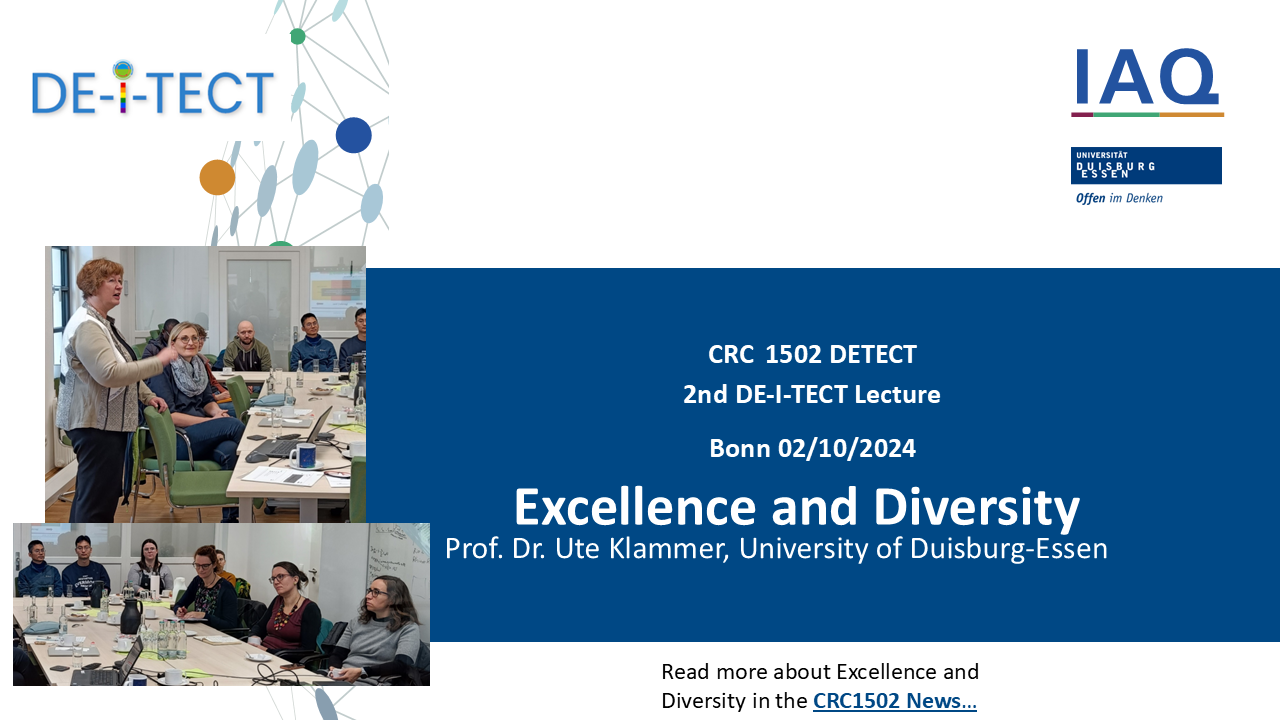Last Wednesday, Professor Ute Klammer from University Duisburg-Essen gave a scientific talk about diversity, scientific excellence and how they can be rendered visible.
In her lecture, Professor Klammer demonstrated that diversity in higher education and research comprises a broad field of action. Diversity, often tied to women and men researchers, needs a broader view covering additional dimensions such as social background. This means that strategies to increase diversity need a cross-sectional perspective: research, teaching and studying, and overall strategic development.
Likewise, the predominant understanding of excellence can appear narrow, e.g., third-party funding, highly ranked publications, awards, and international visibility. For example, empirical evidence shows severe gender bias in the evaluation of academic performance of individuals, with men appearing advantaged over their women counterparts. Women researchers are frequently not (made) visible in public and within their disciplines, which is why they are perceived less often as innovators than their men colleagues are. Note the visibility paradox: visibility without excellence, visibility through excellence and excellence without visibility. Potential expansions on the concept of excellence therefore ideally include societal responsibility, fairness, out-of-the box thinking or intercultural competence.
Let’s continue promoting knowledge about and raising awareness on the complexity of diversity and excellence!
More details about her research can be found on the Exenko project website and in this German article.
Thank you very much, Ute Klammer for this inspiring talk and exhange!
The event has been published on our Twitter/X account as well, available here.
Download the flyer here.


